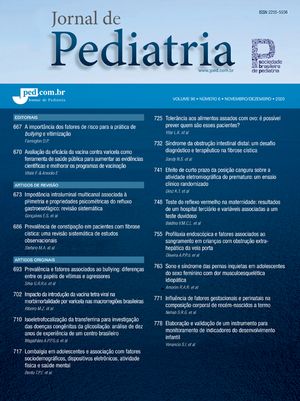
To present a critical and up-to-date review of ischemic brain damage in premature, very low birth weight infants.
Sources of dataArticles were obtained by means of a search of the MEDLINE database, with those considered most representative by the authors being selected.
Summary of the findingsThe most frequent ischemic injuries among preterm, very low birth weight neonates are hemorrhage progressing to with ischemic brain damage, cystic periventricular leukomalacia and diffuse lesions of the cerebral white matter. All of these conditions have multiple causative factors, which may include vascular, hemodynamic, inflammatory and infectious factors. These are disorders that can cause significant neuropsychomotor sequelae and lead to cerebral palsy and/or cognitive and behavioral deficits.
ConclusionsEarly diagnosis and adequate management of the patient can minimize long-term problems caused by cerebral ischemic injuries. Prevention of premature labor and delivery is the most important prophylactic measure.
Apresentar uma revisão crítica e atualizada sobre as lesões cerebrais isquêmicas no recém-nascido pré-termo de muito baixo peso.
Fontes dos dadosAs referências foram obtidas através do banco de dados MEDLINE, sendo selecionadas as mais representativas a critério dos autores.
Síntese dos dadosA hemorragia com evolução para lesão isquêmica cerebral, a leucomalácia periventricular cística e a lesão difusa da substância branca cerebral são as lesões isquêmicas mais freqüentes em recém-nascidos pré-termo de muito baixo peso. Todas são doenças de causas multifatoriais, em que podem estar envolvidos fatores vasculares, hemodinâmicos, inflamatórios e infecciosos. São doenças que podem causar seqüelas neuropsicomotoras importantes e levar à paralisia cerebral e/ou déficit cognitivo e comportamental.
ConclusõesO diagnóstico precoce e uma estratégia terapêutica adequada podem minimizar as seqüelas causadas por essas doenças. A prevenção da prematuridade é a principal medida preventiva a ser tomada.








